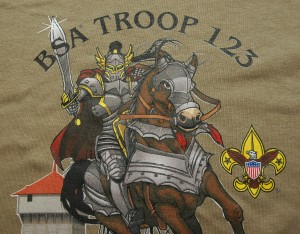Apparel Decoration Method
Direct To Garment Printing
DTG Overview
Digital Printing is a decoration process applies a design directly from a computer file to the garment, using water based inks. The process can be used for any color garment, provided the garments are of a particular fabric type. For any garment color other than white, a base white layer and a pre-treatment is applied to make the design visible.The ClassB Digital Printing Process
The Artwork
The artwork for digital printing is unique compared to all our other decoration methods. We use a filter of sorts to convert colors to closely match our screen printing inks. This color palette is specific to digital printing to get the best results out of the printer and is unique to our particular printer. To properly reproduce particular colors, we have modified the standard computer definition so the results on the shirt will match the color desired. Hundreds of tests and hours were spent to get the best possible match.Some colors cannot be reproduced as they contain fluorescent pigments that are not available in the inks used in a digital printer.
In screen printing, tints and shades are made up of small dots, with the shirt color showing between the dots. The size of each dot determines how much of a tint of the solid color is showing. Digital printing, by default, starts with a solid layer of white ink with then the dots of color applied to it. To show accurate results when compared to screen printing, this solid layer of white ink has to be removed for tints to reproduce as dots of color with shirt color between. As this function was not available commercially, we had to write a special program that processes the artwork so tints and shading reproduce properly. The artwork is then processed through a different computer to convert the file to be readable by the digital printing machine.
Shirt Preparation
The shirt must be prepared for digital printing as well. It’s first coated with a special pre-treatment solution that keeps the ink from being pulled into the shirt material. This solution is mostly acetic acid (vinegar), which is applied in a consistent layer on the area to be printed.The Ink
The ink used in the digital printing process is water-based pigment ink. The ink is specially formulated for garments and requires careful application and processing for best results.
The Printing Process
The shirt is placed in the printer and positioned so the image will be in the proper location on the shirt. The white ink is then printed in series of passes. The color inks include standard cyan, magenta, yellow, and black, along with light magenta and yellow to achieve a wider color gamut. The resolution of the printer is 600 dpi x 600 dpi, whereas the standard resolution in screen printing is the equivalent to about 72 dpi. After the printing process is complete, the shirt is then taken off the press and placed in a different hot press to cure the ink. The ink must get up to around 300 degrees. It’s at this point the pretreatment may sometimes appear discolored. This discoloring will wash away in the first wash. The shirts are cooled for several minutes and stacked. The order is then packed and sent on it’s way to you.Other Methods
Digital Printing is a relatively new technology for garment decoration. In our investigation we found a variety of machine/ink/chemical combinations. While the results vary and the chemistry is different. The basic process for digital printing is the same.
The ClassB Difference
ClassB® has earned the Boy Scouts of America® Quality Licensee award every year it has been available - more than any other BSA® licensee! Our high regard for quality is another reason why ClassB® is the best choice to makeYour Direct to Garment Printed Apparel

















